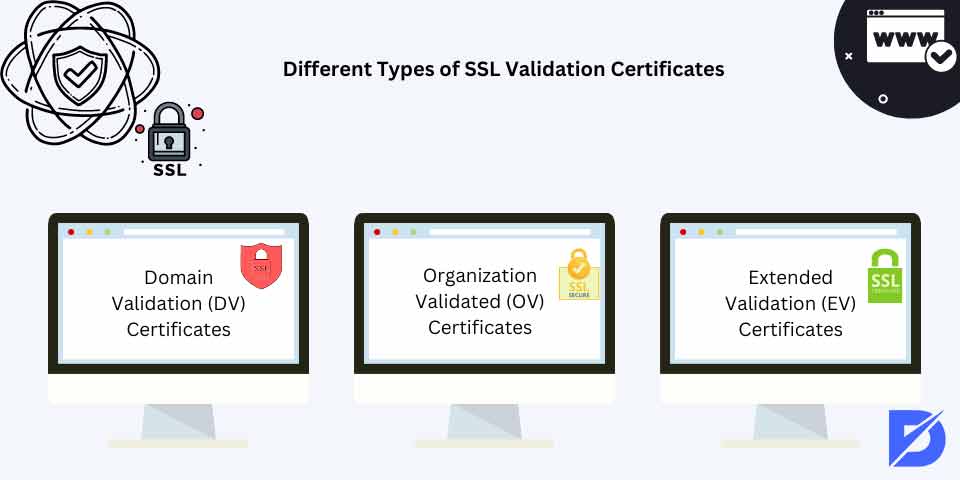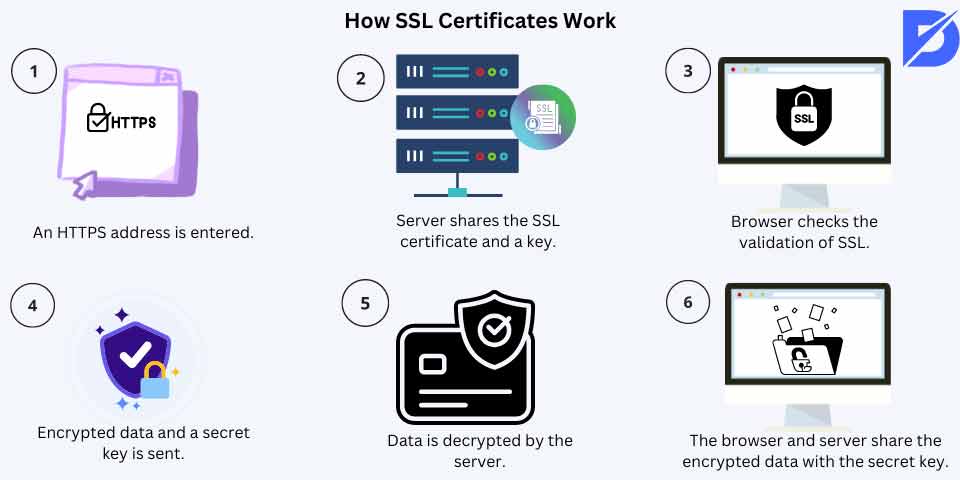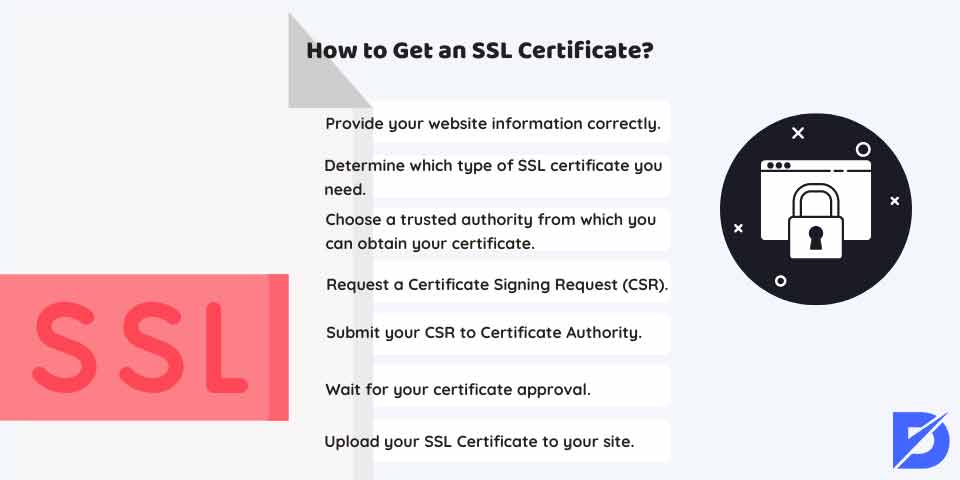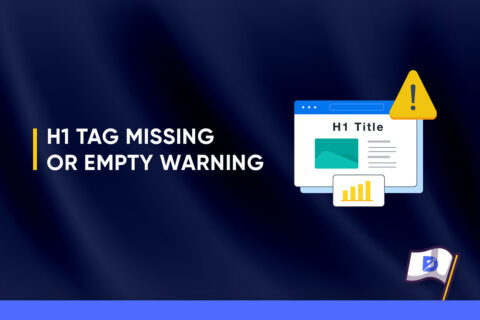As the transactions and applications on these websites began to diversify, it became necessary to manage data traffic securely. The SSL Certificate is to ensure the data traffic of websites. So, how can we have an SSL certificate? Through the article, we will explain how to get an SSL certificate. There are two ways you can obtain a certificate.
The first is to use the SSL service provided for free by many companies. It is sufficient to click Let’s Encrypt in Cpanel or Plesk Panel in this method, which is very easy to install. Then, on the open page, if you enter an e-mail address belonging to the domain address and press the continue button, SSL will be active. You can see if SSL is not working by typing https: // in the domain name. Then you must ensure that all links in the site open as https: //. When the indexes in search engines receive a click, the pages open with https: //. You can also do page redirects for ASP sites, and for PHP sites, you can replace 301-page redirects or http: // header from the HTTACES file with https: //. Let’s first start with what SSL is.
What Is an SSL?
Before we begin with getting an SSL certificate, you may ask what is SSL. SSL is a security protocol that provides a secure connection between the server and the browser. It ensures that all information carried on the website remains secure and confidential. You can usually see the SSL sign on the left side of a website’s link. This sign, similar to a lock sign, means that the website you are visiting is trustworthy. Having this SSL security mark on your website is important as it will provide trust for people visiting your site.

Why Are SSL Certificates Important?
One of the most important things is that your website is reliable for its users. Users who enter a site specifically for shopping want to know that they are safe before sharing their personal information on that website. Having a web site certificate allows you to attract more customers and build trust with your existing customers. It is critical that personal data remain secure and protected and not fall into the hands of untrusted persons. By purchasing an SSL certification for your website, you provide this trust to users visiting your site. That’s why you need to get an SSL certificate for website of yours.
Ensuring security in data exchange between the website and the browser is among the critical SEO factors. However, the use of SSL certificates has a direct effect on the ranking. The SSL certificate will move your site to the next level if you are equal to your competitor. Therefore, SSL certificates play an equitable role rather than rising in search results. However, it may be wrong to approach the situation only through search engines when considering the impact of secure sites on SEO.
According to a survey conducted by GlobalSign, 84% of users stated that they would not look favorably on data sent over an unsecured connection and, in this case, would give up the purchase. You must have an SSL certificate if you have a website that sells online. If you collect user data through forms or cookies, you must have an SSL certificate.

SSL Certificate Types
Before purchasing a certificate, you need to determine what type of certificate you need. The certificate is classified according to the type of verification and usage areas. There are three types of certificates according to the type of verification: Domain verification, organization verification, and extended verification.
- DV SSL, used for domain verification, is the cheapest and most widely used certificate type. Although the verification level is low, the warranty cost of DV SSL certificates is. The verification time is relatively short (verification is completed within 1-2 minutes), which is generally even lower. DV SSL is a type of certificate widely used by small or medium-sized companies or enterprises.
- OV certificates are an intermediate type of certificate that includes corporate information obtained by the company by verifying this information. The institution applying for a certificate and the person applying on behalf of the institution requires a document containing information. After the document is checked and verified, OV certificates are activated. The OV certificate’s activation time is 1-2 days on average. Corporate companies generally prefer OV SSL.
- Unlike domain or organization-based certificates, SSL certificates with extended validation have a structure with a lock sign, company name, and logo on the address bar. EV SSL type is generally for websites, banks, or e-commerce sites where medium and large-scale commercial happen.

How SSL Certificate Works?
You may be wondering how SSL works. This process is quite complex and consists of steps with many technical terms. But we will explain this process in simple steps so that you can understand it more easily.
When you enter the address of a website and click on that site, your computer detects and verifies the SSL certificate of the website you entered with a public key. A secure connection is created between the two devices. After this step, every data you share on the website will be protected by SSL. You can safely browse the site, and if you are going to make a purchase, you can easily make it.
How to Get an SSL Certificate?
You can start by looking at what kind of secure certificate for website you need. You should compare the SSL certificate types and choose the one that suits you best. Of course, when you decide on a certificate for website that suits your needs, you need to see if it fits your budget. Prices of SSL certificates may vary depending on the content they cover. Here, it is very important to find the most suitable option for you. After finding and purchasing SSL certificates that suit you, you need to verify your website information through ICANN Lookup. You should then generate the CSR. After confirming your domain, you can upload your website certificate. If we explain them step by step, we can summarize them as follows:

- Provide your website information correctly.
- Determine which type of SSL certificate you need.
- Choose a trusted authority from which you can obtain your certificate.
- Request a Certificate Signing Request (CSR).
- Submit your CSR to Certificate Authority.
- Wait for your certificate approval.
- Upload your SSL Certificate to your site.
Browsers’ Approach to Certificates
Chrome, the most widely used browser globally, adds “Not secure” next to the beginning of the URL for sites that do not have a certificate. Likewise, there is a lock icon before the URL and a “Secure Connection” warning for websites with SSL certificates. These URL settings are configured correctly. The ‘not safe’ warning will create a negative impression on the site visitors. It may cause hesitation in the processes related to personal information sharing, e-mail subscriptions, or online payment. Using a certificate to increase site interactions and secure data exchange between browsers and your site is important.
Conclusion
By using a certificate, you can make your time on the internet more secure. Obtaining this certificate is a very easy process, as described above. If you care about your safety, pay attention to this. Having an SSL certification will benefit your website as well as grow your sales. We hope you have a clear idea of how to get an SSL certificate and how it works.
Frequently Asked Questions About
The SSL Protocol ensures that the information sent with the encrypted protocol used in the https: // connection can be decrypted at the absolutely correct address.
This certificate, which means a secure entry layer, provides a secure environment by encrypting the data during communication between the server and the recipients.
SSL certificates offer a certain amount of guarantees for websites. The guarantee of an SSL certificate varies according to the issuing institution and the type of SSL certificate.
Before purchasing an SSL certificate, it is important to act according to your company’s needs. You can choose DV-type certificates if you have a small website and do not sell online.
SSL certificate is a digital document that verifies the identity of the connected website and ensures that the information sent and received to the server using SSL protocol is encrypted and transferred. Information shared over an SSL connection can only be read with the appropriate password and keys.





No comments to show.